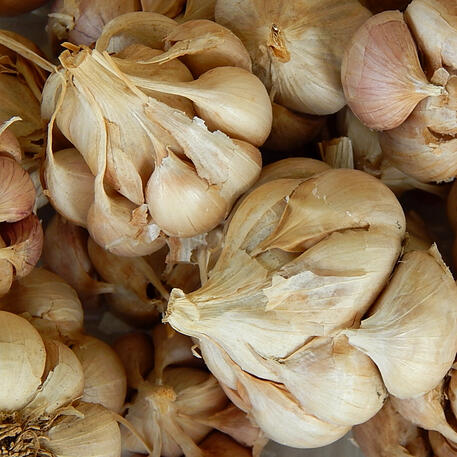GARLIC
BOTANICAL NAME: Allium sativum
COMMON NAMES: Krathiem, Bawang Putih, Bawang,
FAMILY: Alliaceae
ORIGIN: Garlic has a very long history of use as a food and a medicine. It was given to the Egyptian labourers when building the pyramids because it was believed to confer strength and protect from disease. Well-preserved garlic was found in the tomb of Tutankhamun (c. 1325 BC). It was also widely used by the Romans. China currently produces around 76% of the world's supply of garlic. The word garlic derives from Old English, garlēac, meaning gar (spear) and leek, as a 'spear-shaped leek'
PLANT DESCRIPTION
Garlic is a well-known bulb with flat, grey-green leaves. It is widely cultivated in most parts of the world for its edible bulb, which is used mainly as a flavouring in foods. Different varieties vary in their suitability for different climate zones as well as in flavour and heat strength.
USES
Garlic's uses are many and varied. Its characteristic pungent, spicy flavor mellows and sweetens considerably with cooking. When cooked it can be baked, boiled, sautéed and grilled. It is nutritious, being high in vitamins A, B1, B2 and C. The young leaves and sprouts are considered a delicacy.
Eating raw garlic has also been reputed to act as a mosquito repellent (due to its sulphurous compounts circulating in the blood), but there is no evidence garlic is effective for this purpose.
Immature scapes are tender and edible and are also commonly used. They are also known as "garlic spears", "stems", or "tops". Scapes generally have a milder taste than the cloves. They are often used in stir frying or braised like asparagus
Inedible or rarely eaten parts of the garlic plant include the "skin" covering each clove and root cluster. The papery, protective layers of "skin" over various parts of the plant are generally discarded during preparation for most culinary uses, though in Korea immature whole heads are sometimes prepared with the tender skins still intact.
The root cluster at the base of the bulb is the only part not typically considered edible in any form.
PLANTING DETAILS
Garlic does well in loose, dry, well-drained soils in a sunny location. Soil may be Improved by adding compost or well-rotted animal manure before planting. When planting, to begin separate the garlic bulb into cloves. In warmer areas (Qld and northern NSW), garlic should be planted in March to early April. Planting after April will reduce the size of the bulbs. When planted in March garlic will be ready for harvest by end September. In cooler climates (Vic, Tas and southern states) cloves are best planted in autumn or spring.
Plant cloves so that the tops of the bulbs are just below the soil surface. The flatter or root end should be pointing down.
Space cloves approx. 10 cm apart, in rows 40 cm apart.
Mulch well, as garlic dislikes competition from weeds. (Note: The best mulch to use is lucerne as it is excellent at breaking down and forming a weed barrier and nutrient layer around the cloves). Regular watering is important, do not allow the soil to completely dry out during bulb formation. Stop watering once the tops brown.
Garlic plants usually take about 8 months to produce a bulb (depending on variety). Garlic scapes (the flowering stem) are best removed to focus all the garlic's energy into bulb growth - scapes may be eaten raw or cooked. Harvest when the tops begin to turn brown and the plant has 3 to 4 leave still green. It is important not to wait until the tops have completely died back as each green leaf will end up being the 'paper' covering around the bulb. Treat the bulbs gently as bruised bulbs do not store well. Pull plants and hang the whole plant in bunches, or spread on racks and allow to dry undercover for 2 to 3 weeks. The skins will then become papery and dry and should be trimmed of tops and roots. Good air circulation is essential to allow for complete drying. Bulbs store better whole and not separated into cloves.
In the home garden, garlic is stored at a warm temperature (above 18 °C) and dry to keep it dormant (to inhibit sprouting). It is traditionally hung; softneck varieties are often braided in strands called plaits.
Freshly peeled cloves may be stored in wine or vinegar in the refrigerator.
NOTE: Avoid planting garlic purchased at the supermarket, as it is likely to be imported garlic with an associated risk of introducing serious virus diseases to your soil. If originating from overseas, it will also have been irradiated to prevent sprouting on the supermarket shelves.
COMPANION PLANTS
Garlic may be planted around all trees to repel borers. As a natural pest control remedy garlic may also be planted amongst roses, fruit trees and vegetables to repel sap sucking and leaf eating insect pests such as aphids etc..
LIKES: Dill, Beetroot, Silverbeet, Kale, Spinach, Potato, Carrots, Eggplants, Tomato, Capsicum & Chilli, Cabbage, Cauliflower, Broccoli
DISLIKES: Asparagus, Chives, Beans, Leek, Onion, Parsley, Pea
Garlic plants are also said to repel rabbits and other rodents in the garden.
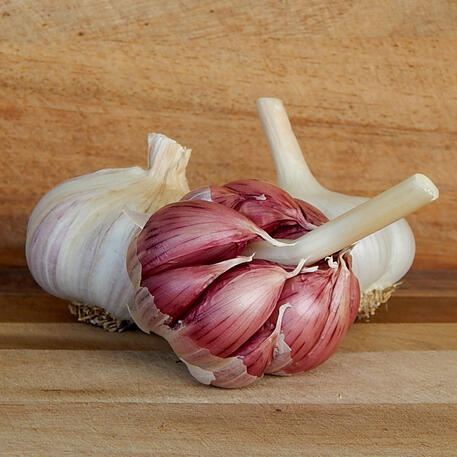
DYNAMITE PURPLE
SOLD OUT UNTIL 2025 ***NOT TO TAS, WA*** (Allium sativum) Attractive, pure white bulbs containing 12-15 brightly coloured, dark pink to purple colo
$4.95
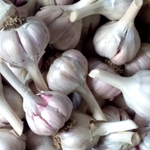
FRENCH AMEYTHEST
***NOT TO TAS, WA*** Beautiful, purple variety with smooth flavor. This garlic is very versatile for cooking or eating raw. A good choice for a fla
$4.95
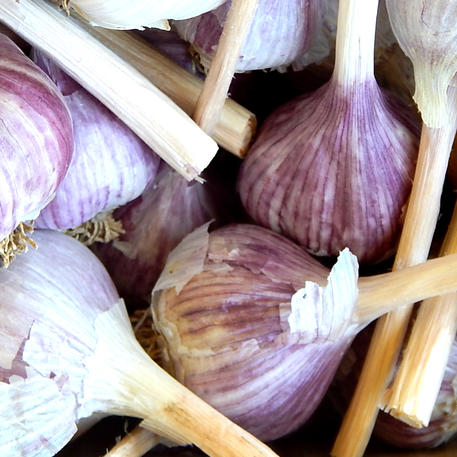
MASTER JACK
***NOT TO TAS, WA*** (Allium sativum) Attractive, fine papered bulb containing rich, deep brown / red cloves with deep, rich, creamy, nutty flavour
$4.95
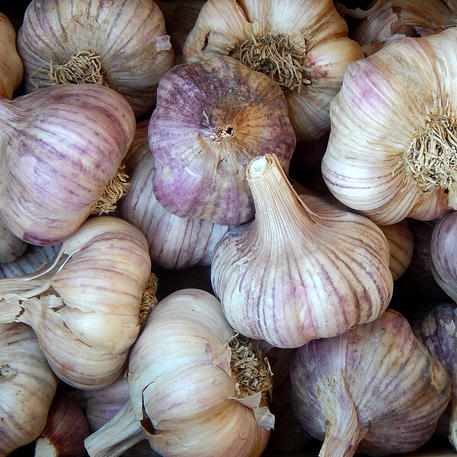
MONARO PURPLE
***NOT TO TAS, WA*** (Allium sativum) Medium to large, flattened bulbs with white skin and strong purple streaks. Warm to hot with rich garlic flav
$4.95
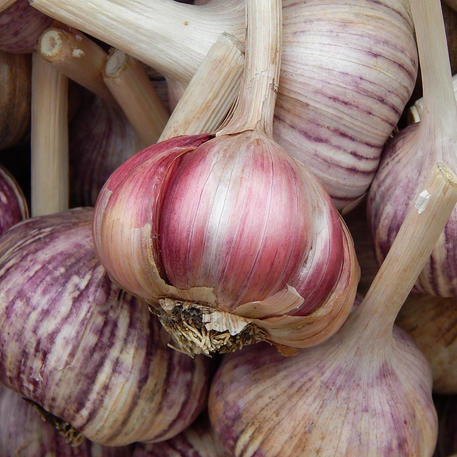
ORIENTAL PURPLE
***NOT TO TAS, WA*** (Allium sativum) Originally from the Yunnan Province (highlands) in northern China. Attractive, deep purple striped bulb with i
$4.95
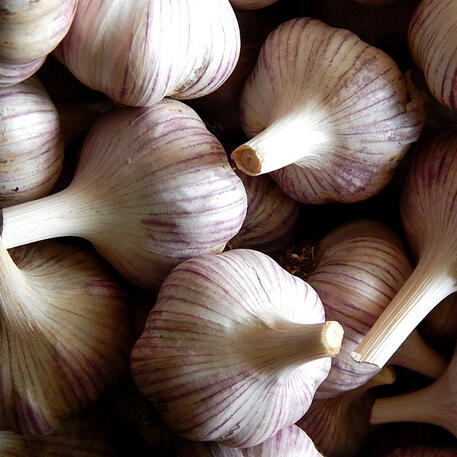
PHILLIPS RED
***NOT TO TAS, WA*** (Allium sativum) Medium to large bulbs with purple striping. Cloves are spicy, full-bodied and have a robust flavour. Great fo
$4.95
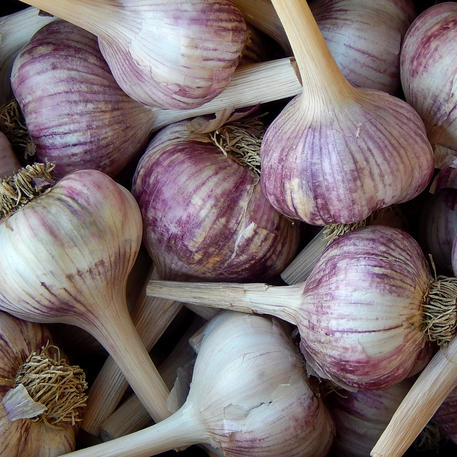
PURPLE STRIPE
***NOT TO TAS, WA*** (Allium sativum) White bulbs displaying pale to deep purple stripes containing pale pink, mild flavoured cloves with pleasant
$4.95
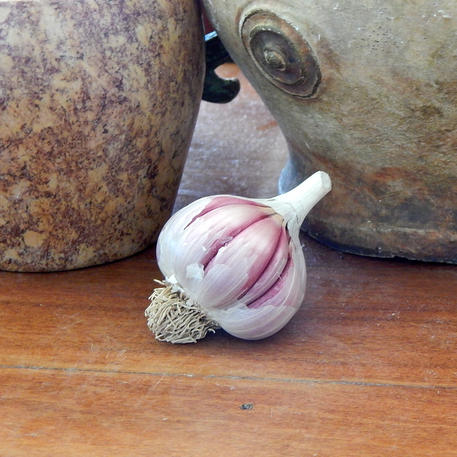
ROJO DE CASTRO
***NOT TO TAS, WA*** (Allium sativum) Originating from Spain. Round, globe shaped small to medium bulbs with purple cloves & minimal heat (quite mi
$4.95
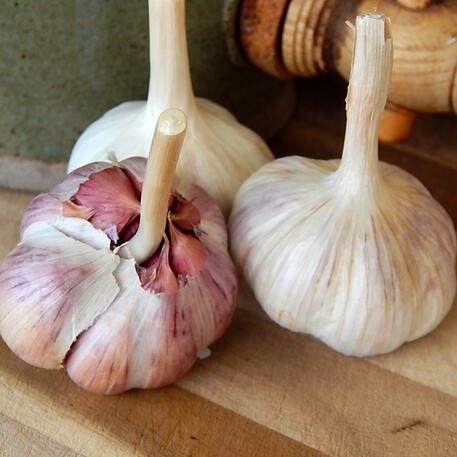
ROSE DU VAR
SOLD OUT UNTIL 2025 ***NOT TO TAS, WA*** (Allium sativum) French heirloom. Named 'Rose du Var' because of its attractive silverskin & rose to red
$4.95
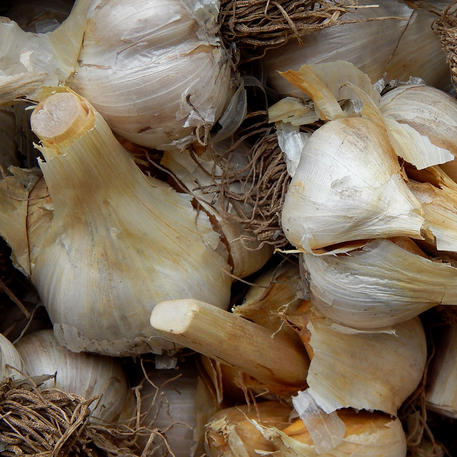
RUSSIAN ELEPHANT
***NOT TO TAS, WA*** (Allium ampeloprasum) Originating from Russia & also known as 'Elephant Garlic'. Tall plant to 1.2m producing large, creamy w
$5.20
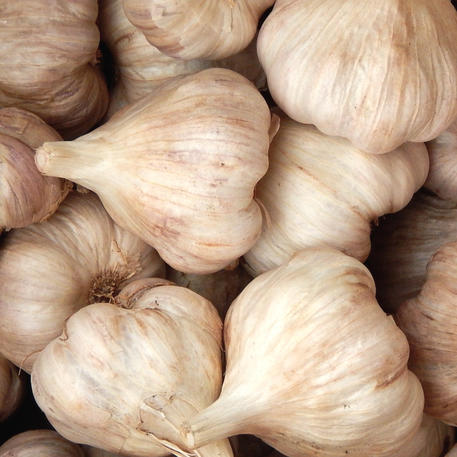
SUE'S PURPLE
***NOT TO TAS, WA*** (Allium sativum) Beautiful, artichoke type garlic with hints of purple on a white outer skin & attractive rose coloured inner c
$4.95
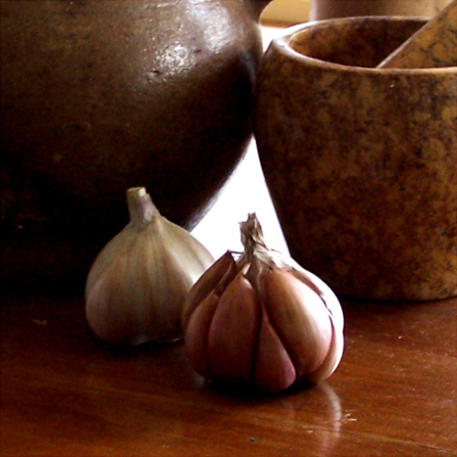
TASMANIAN PURPLE
***NOT TO TAS, WA*** (Allium sativum) New Zealand heirloom later being brought to Tasmania. Producing large, purple cloves. Mild, sweet & faintly
$4.95
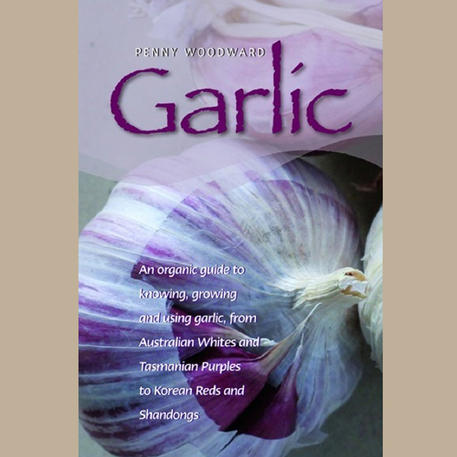
GARLIC (Book)
by Penny Woodward. An organic guide to knowing, growing & using garlic from Australian Whites & Tasmanian Purples to to Korean Reds & Shandongs. Gar
$29.95













